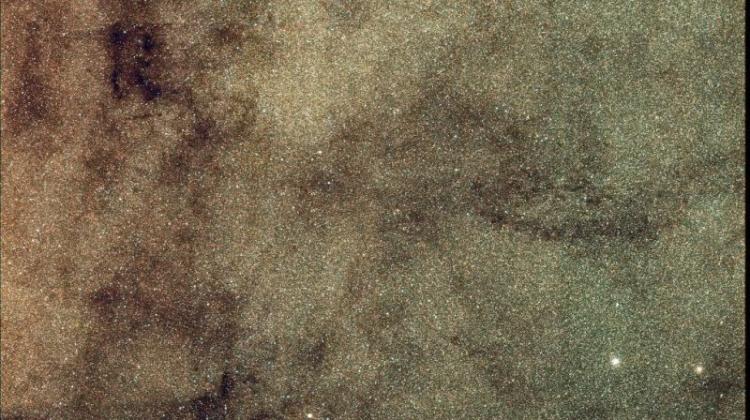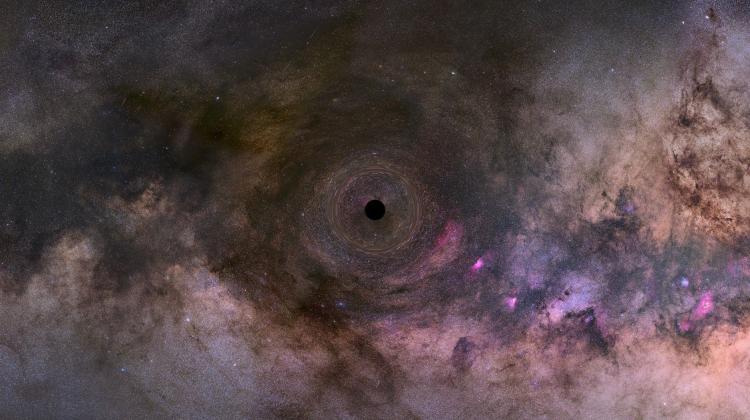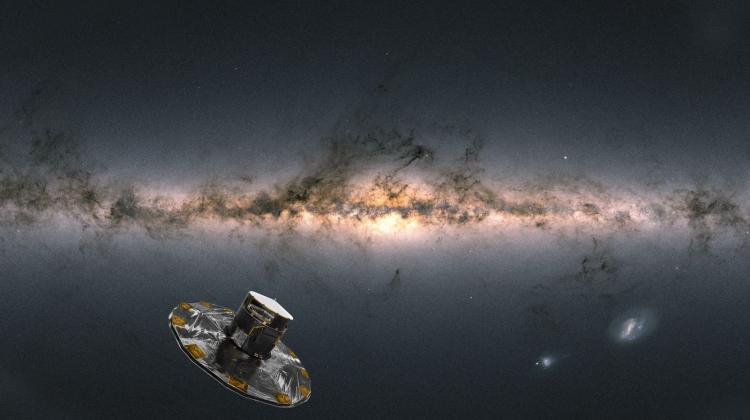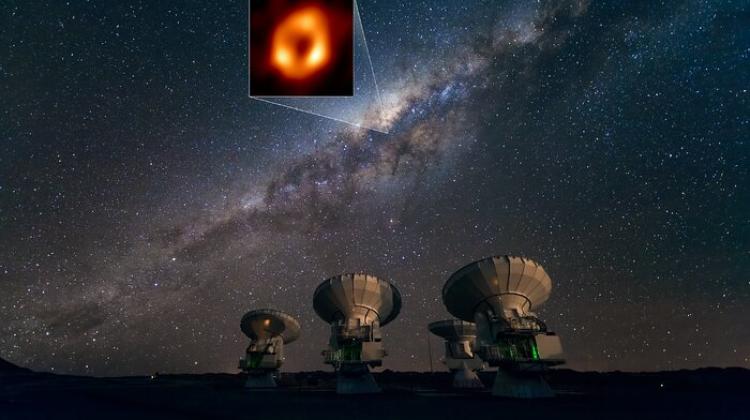The oldest stars found in the centre of the Milky Way
 Image of stars in the Milky Way made with Australian telescope SkyMapper. Source: SkyMapper/Chris Owen.
Image of stars in the Milky Way made with Australian telescope SkyMapper. Source: SkyMapper/Chris Owen.
International research group discovered in the centre of the Milky Way the oldest stars, which formed shortly after the Big Bang. The results have been reported in the weekly journal "Nature". Involved in the research project were Poles from the OGLE project, headed by Prof. Andrzej Udalski.
It is believed that the first stars formed about 200-300 million years after the Big Bang. Such original objects have not been observed so far, but there are known star very poor in the so-called metals (in the terminology used by astronomers), or elements heavier than hydrogen and helium. The longer the period since the Big Bang, the more metals are in the stars, as successive generations of stars are formed from material enriched in heavy elements by their predecessors, e.g. through explosions of supernovae or intense stellar winds.
Most of the stars in the galactic bulge of the Milky Way are rich in metals, because there is a lot of gas and dust, so the star formation processes in this region were taking place quickly and the oldest generations of stars enriched the interstellar matter in metals as early as 1-2 billion years after the Big Bang.
Until now, in the case of the Milky Way astronomers knew metal-poor stars in the galactic halo (in the outer parts of the galaxy), but they were not detected in the galactic bulge (in the central parts). Meanwhile, according to the theory, stars of this type should have formed primarily in the centres of galaxies forming just after the Big Bang, in areas with high density of matter. Later, the seeds expanded and formed the central regions of galaxies.
Researchers from the group led by Louise Howes from Lund University in Sweden, and earlier the Australian National University in Canberra (Australia), where she conducted the study, decided to search for the oldest stars in the central region of our galaxy. The search ended in success - for the first time such objects have been identified in this region.
Pre-selection of 14000 candidates was carried with the Australian telescope SkyMapper, and then the stars were tested spectroscopically with the Anglo-Australian Telescope (AAT). As a result, in the centre of the galaxy researchers found over 500 stars with a low content of elements heavier than helium. 23 stars with the lowest content of the elements were analysed in detail using a spectrograph on the 6.5-meter Magellan Telescope at Las Campanas Observatory in Chile. It turned out that they contain a thousand times less heavy elements than the Sun, and the record holder contains even ten thousand times less of them. These stars are therefore extremely chemically homogeneous and belong to the oldest objects in the Universe.
"These are the oldest stars that have ever been found in the Milky Way" - emphasised Howes.
It was still necessary to check whether these stars were actually related to the centre of the Milky Way, and not objects from the halo that were accidentally passing through the area. Key to determining the orbits of objects were the observations made by the Polish OGLE project led by Prof. Andrzej Udalski from the University of Warsaw Astronomical Observatory.
"Extremely precise measurements of the positions of stars in the images of the sky registered by the OGLE project and the long observation time base allowed to track the movements of the stars with high accuracy" - said the author of astrometric measurements Radosław Poleski, currently a postdoc at Ohio State University (USA).
For ten stars it was possible to determine precise orbits in the galaxy. Seven of them are certainly in the centre of the Milky Way, and they formed only a few hundred million years after the Big Bang.
"It\'s funny that the measurements of the positions of stars on images taken by the OGLE review contributed to the success of our joint project, and not the measurements of their brightness. This opens a new range of applications of the observational material we have been collecting for years" - added Prof. Andrzej Udalski.
The results of the study were presented in an article in the prestigious scientific journal "Nature", published in the electronic version on 11 November. Polish members of the research team from the University of Warsaw Astronomical Observatory are: R. Poleski (also from Ohio State University, USA), A. Udalski, M.K. Szymański, I. Soszyński, G. Pietrzyński (also from the Universidad de Concepción in Chile) K. Ulaczyk (also from the University of Warwick in the UK), Ł. Wyrzykowski, P. Pietrukowicz, J. Skowron, S. Kozłowski and P. Mróz.
OGLE project is co-financed by the Ministry of Science and Higher Education, National Science Centre and the Foundation for Polish Science.
PAP - Science and Scholarship in Poland
cza/ agt/ zan/
tr. RL
Przed dodaniem komentarza prosimy o zapoznanie z Regulaminem forum serwisu Nauka w Polsce.


















